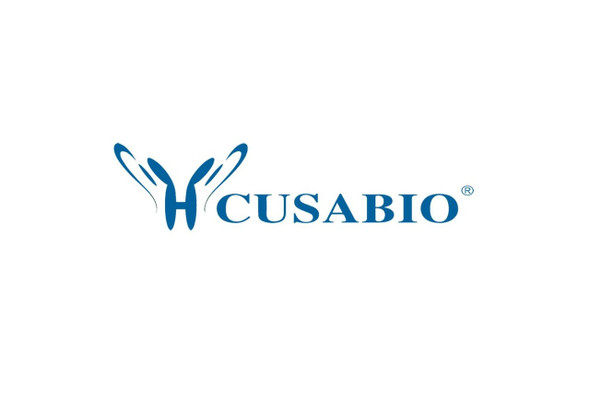Cusabio Active Proteins
Recombinant Human Fibroblast growth factor 4 (FGF4), partial (Active) | CSB-AP003981HU
- SKU:
- CSB-AP003981HU
- Availability:
- 5 to 10 Working Days
Description
Recombinant Human Fibroblast growth factor 4 (FGF4) ,partial (Active) | CSB-AP003981HU | Cusabio
Protein Description: Partial
Alternative Name (s) : Fibroblast growth factor 4; FGF-4; Heparin secretory-transforming protein 1; HST; HST-1; HSTF-1; Heparin-binding growth factor 4; HBGF-4; Transforming protein KS3; FGF4; HST; HSTF1; KS3
Gene Names: FGF4
Research Areas: Signal Transduction
Species: Homo sapiens (Human)
Source: E.coli
Tag Info: Tag-Free
Expression Region: 54-206aa
Sequence Info: SLARLPVAAQPKEAAVQSGAGDYLLGIKRLRRLYCNVGIGFHLQALPDGRIGGAHADTRDSLLELSPVERGVVSIFGVASRFFVAMSSKGKLYGSPFFTDECTFKEILLPNNYNAYESYKYPGMFIALSKNGKTKKGNRVSPTMKVTHFLPRL
Biological Activity: The ED50 as determined in a cell proliferation assay using BALB/c 3T3 cells is less than 10 ng/ml.
MW: 16.9 kDa
Purity: Greater than 95% as determined by SDS-PAGE.
Endotoxin: Less than 1.0 EU/µg as determined by LAL method.
Relevance: Fibroblast growth factor 4 (FGF-4) is a heparin binding member of the FGF family. The human FGF4 cDNA encodes 206 amino acids (aa) with a 33 aa signal sequence and a 173 aa mature protein with an FGF homology domain that contains a heparin binding region near the C-terminus. Mature human FGF4 shares 91%, 82%, 94% and 91% aa identity with mouse, rat, canine and bovine FGF4, respectively. Human FGF-4 has been shown to exhibit cross species activity. Expression of FGF-4 and its receptors, FGF R1c, 2c, 3c and 4, is spatially and temporally regulated during embryonic development. FGF-4 is proposed to play a physiologically relevant role in human embryonic stem cell selfrenewal. It promotes stem cell proliferation, but may also aid differentiation depending on context and concentration, and is often included in embryonic stem cell media in vitro. FGF-4 is mitogenic for fibroblasts and endothelial cells in vitro and has autocrine transforming potential. It is a potent angiogenesis promoter in vivo and has been investigated as therapy for coronary artery disease.
PubMed ID:
Notes: Repeated freezing and thawing is not recommended. Store working aliquots at 4℃ for up to one week.
Function: Plays an important role in the regulation of embryonic development, cell proliferation, and cell differentiation. Required for normal limb and cardiac valve development during embryogenesis.
Involvement in disease:
Subcellular Location: Secreted
Protein Families: Heparin-binding growth factors family
Tissue Specificity:
Paythway: MAPKsignalingpathway
Form: Lyophilized powder
Buffer: Lyophilized from a 0.2 μm filtered 1xPBS, pH 7.4
Reconstitution: We recommend that this vial be briefly centrifuged prior to opening to bring the contents to the bottom. Please reconstitute protein in deionized sterile water to a concentration of 0.1-1.0 mg/mL.We recommend to add 5-50% of glycerol (final concentration) and aliquot for long-term storage at -20℃/-80℃. Our default final concentration of glycerol is 50%. Customers could use it as reference.
Uniprot ID: P08620
Uniprot Entry Name:
HGNC Database Link: HGNC
UniGene Database Link: UniGene
KEGG Database Link: KEGG
STRING Database Link: STRING
OMIM Database Link: OMIM









